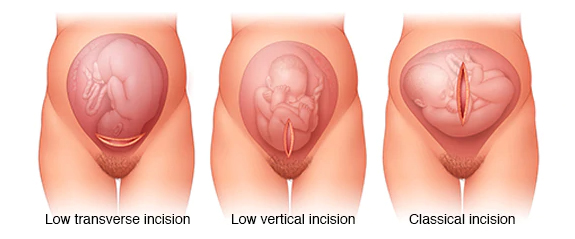Obstetrics / Prenatal Care
Labor and Delivery Services in Brooklyn
Receive Labor and Delivery Services in Brooklyn
BellaDonna MD helps to deliver thousands of babies yearly and this experience is at work for you, from the informative way your questions are answered during pregnancy, to the support nurses offer during labor and delivery, to the welcome you and your baby receive on the maternity suite. Dr. Yunayev believes in an approach to childbirth that includes your family as part of the celebration. Fathers are invited to participate in the actual delivery and various courtesies, such as extended visiting hours, are granted to fathers, grandparents and siblings throughout your BellaDonna MD experience. All this takes place in our beautifully renovated maternity suite.
Labor and Delivery FAQ
What Happens During the Delivery of a Baby?
During delivery, the doctor or midwife will help you give birth to your baby. When a baby comes out of a woman’s vagina, it’s called a “vaginal delivery.” When a doctor does surgery to get a baby out of a woman’s uterus, it’s called a “c-section” or “cesarean delivery.”
During a vaginal delivery, you will work hard to push your baby out. But before you can push your baby out, a few things need to happen. Your cervix has to soften, thin out, and open up all the way. Also, your baby has to move down from the uterus into the vagina. When this happens, it can feel like you are going to have a bowel movement.
Your doctor or midwife will tell you when you can start pushing your baby out. In most cases, you can be in whatever position feels comfortable to you. For example, you can lie on your side, sit up, kneel, or squat. Pushing a baby out can take anywhere from minutes to hours. It usually takes longer when it’s a woman’s first baby.
Most mothers can push the baby out without any problems. But sometimes, the doctor or midwife will help get the baby out by pulling on a device that can be placed on the baby’s head. If the doctor needs to deliver a baby right away, he or she will do a c-section.
Yes, childbirth usually hurts. But the amount of pain is different for each woman. Women choose to manage their pain in different ways. There is no one way that works for everyone. The right decision is the one that is best for you.
Some women choose to have a “natural” childbirth. This means that they do not use any pain medicines during labor or delivery. Instead, they do other things, such as breathing exercises, to lessen their pain.
Other women choose to have medicines to lessen the pain of labor and delivery. If you choose to have pain medicine, your doctor or midwife will probably start giving you the medicine during your labor, before delivery.

Before birth, babies lie in the uterus in different positions. At the end of pregnancy, most babies lie with their head closest to the vagina. But some babies lie with their legs, buttocks, or shoulders closest to the vagina. Doctors call it “breech” if a baby’s legs or buttocks are closest to the vagina.
If your baby isn’t facing head down, your doctor or midwife will talk with you about your options. He or she might be able to turn your baby before you go into labor and deliver him or her vaginally. Or he or she might suggest that you have a c-section.
After your baby is born, the doctor or midwife will clamp and cut the umbilical cord. Then they will give the baby to you, or to a pediatrician if the baby needs to be checked right away. If you and your baby are both healthy, the doctor or midwife might wait about a minute before they clamp the cord. This allows the baby to get some of the blood that is in the placenta. (The placenta is the organ inside the uterus that brings a baby nutrients and oxygen and carries away waste.)
Next, the placenta also needs to come out of the uterus. Usually the placenta comes out naturally within 30 minutes of the baby’s birth, but sometimes the doctor or midwife has to help remove it from the uterus.
Next, the placenta also needs to come out of the uterus. Usually the placenta comes out naturally within 30 minutes of the baby’s birth, but sometimes the doctor or midwife has to help remove it from the uterus.
After birth, the doctor, nurse, midwife, or pediatrician will do a quick exam to check your baby’s body and general health. Part of this exam is called an “Apgar test.” It checks your baby’s heart rate, breathing, movement, muscles, and skin color. Your baby will get Apgar tests at 1 minute and 5 minutes after birth.
Soon after birth, you will be able to hold your baby. You can even breastfeed him or her, if you choose to breastfeed.
Your baby will get some treatments soon after birth. These include eye drops or an eye ointment to prevent an eye infection, and a dose of vitamin K to prevent abnormal bleeding.
Before your baby leaves the hospital, he or she will also have:
- A detailed physical exam
- A blood test (done by a heel prick) to check for different serious diseases that babies can be born with. For more information on this testing, ask your doctor or nurse.
- A hearing test
- A dose of the hepatitis B vaccine – Vaccines are treatments that can prevent certain serious infections. Hepatitis B is a serious liver infection.
After you leave the hospital, call your doctor or nurse if you:
- Bleed a lot from your vagina – It is normal to have some vaginal bleeding for a few weeks after delivery. But let your doctor or nurse know if you are having large blood clots or your bleeding increases.
- Feel dizzy or faint
- Get a fever
- Vomit
- Have new belly pain
- Have a severe headache or problems with your vision
- Feel sad or helpless
A c-section is a type of surgery used for having a baby. If you have a c-section, you will be given anesthesia so that you won’t feel pain. Then the doctor will make an incision in your belly and remove the baby from your uterus. About 1 in 3 babies in the United States is born this way. Most babies come out of their mother’s vagina. This is called “vaginal delivery.” C-sections are also called “cesarean deliveries.”

You might. The most common reasons women have a cesarean delivery before they go into labor are:
- The mother had a baby by cesarean in the past
- The baby is not coming out head first
- The baby is very large
- The mother has an infection, such as herpes or HIV. These can spread to the baby during a vaginal birth.
- The mother has a condition called “placenta previa.” The placenta is the organ that brings the baby nutrients and oxygen and carries away waste. In placenta previa, this organ blocks the way to the vagina. As a result, the baby can’t get out on its own.
- The baby has a problem, and the doctor believes labor and vaginal delivery might not be safe because of it.
Some women choose to have cesareans even if they don’t need to. You should talk to your doctor if you think you want to have your baby this way. Surgery brings real risks.
In most cases, you should wait until the 39th week of pregnancy or later. (A normal pregnancy lasts about 40 weeks.)
A common reason is that labor doesn’t move along like it should. This can happen if:
- Contractions (the tightening of the uterus that happens during labor) are not strong enough to get the baby out
- The baby is too big
- The mother’s pelvis is too small (the pelvis is the set of bones around your hips and vagina)
- The baby is in an odd position, such as sideways or chin-first
Other reasons that c-sections are done are:
- The baby’s life is in danger; for example, because its heart rate is too slow.
- The mother’s life is in danger; for example, because she is bleeding too much.
Not necessarily. First, your doctor or nurse might offer a medicine called oxytocin (brand name: Pitocin). The medicine should make your contractions stronger. If that doesn’t help within a few hours, your doctor might suggest a c-section.
Within a few hours, you will be able to move around, and eat and drink. Most women go home after 3 days, but will have some pain. It can take up to 6 weeks to heal completely. Women who have a job can usually go back to work after this time.
Here are the main steps:
- First, you will get anesthesia to keep you from feeling what happens during the surgery. There are 2 kinds of anesthesia. With regional anesthesia, you stay awake. Under general anesthesia, you are asleep.
- Next, the doctor will make an incision on your lower belly. There are 2 ways of making the incision:
- Most of the time, the incision goes across your belly, from 1 side to the other, an inch or 2 above your pubic hair.
- If you are bleeding a lot or your baby is in danger, the incision might go up and down. This kind of incision is sometimes the fastest way to get the baby out.
- After opening your belly, the doctor will make an opening in your uterus and remove the baby. Then the doctor will cut the umbilical cord and take out the placenta.
- Finally, the doctor will close your uterus and belly with stitches and possibly staples.
Some women choose to have cesareans even if they don’t need to. You should talk to your doctor if you think you want to have your baby this way. Surgery brings real risks.
Yes. Although most mothers and babies do well after a c-section, there are risks.
Compared with a vaginal delivery, c-sections are more likely to cause:
- Harm to the bladder, blood vessels, intestines, and other nearby organs Infection
- Blood clots that can block blood vessels and cause trouble breathing
- Lost bonding time between mother and baby
- A longer time for the mother to heal after the birth
- Problems with the placenta and uterus in later pregnancies
- Trouble breathing for the newborn. This usually lasts for just a short time.
Your doctor can help you decide if the risks of surgery are worth taking for you.
For the first few weeks, it is common to have:
- Mild cramps in your belly
- Light bleeding and yellowish fluids coming out of your vagina
- Pain where the incision was made
Call your doctor if:
- You have a fever higher than 100.4°F (38°C)
- Your pain gets worse
- Your vaginal bleeding gets heavier
- The incision in your belly gets more sore or red, or is bleeding or leaking fluid
Not anymore. Today, many women have a “trial of labor” after their previous c-section. This is called a “TOLAC.” A vaginal birth after c-sections is called a “VBAC.” If the cut in your uterus in the first c-section went from side to side (instead of up to down), you have a good chance of being able to have a vaginal birth with your next baby. Ask your doctor if a trial of labor is possible for you.
Request Your Consultation Today
Request a free birth plan consultation at BellaDonna MD. Expect a personalized conversation about how our labor and delivery team can give you the best birth experience. Ready to get started? Call us today or fill out the form below.








